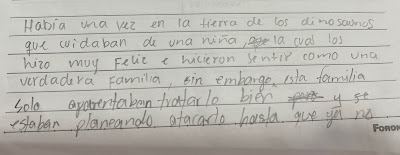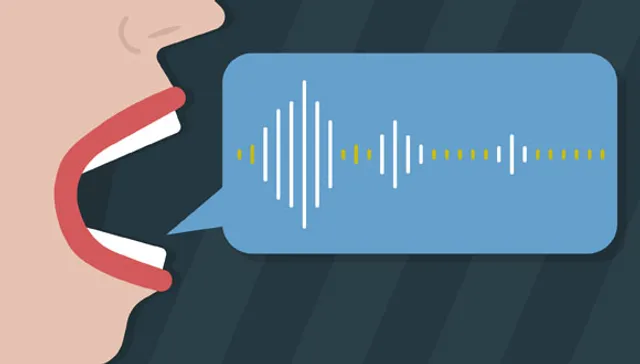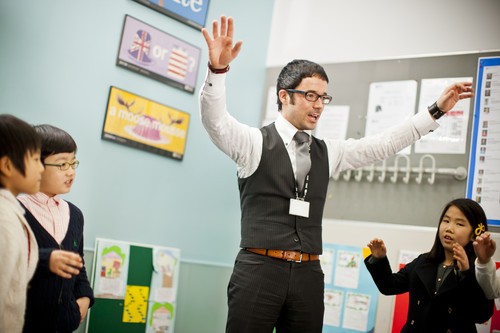Hello again! Welcome to a new entry, and also almost the last one😢
martes, 30 de mayo de 2023
📚Teaching Receptive Skills 🎧
domingo, 28 de mayo de 2023
👩🏫Teaching Speaking 🗣
Hi, welcome back to my blog! 👻
Last time we talked about "Writing", so now it is the turn of "Speaking". To be more precise, today's topic is "Teaching Speaking" 🗣. As you already know, speaking is essential in our day-to-day life, and in the case of students with teachers it is a very important skill for the learning system, besides, like any other skill, it can also be polished. 💁In all the sessions with Teacher Orlando, we always talk and participate as much as possible either in sharing opinions about the topic, saying what we know before developing a specific topic, or among ourselves as classmates when we do an activity, the practice is constant and our skill keeps developing more and more. It also helps teachers to get to know the students better and adapt to their needs, and try to make the teaching method suitable for everyone to be able to perform different speaking activities.
There are several activities for speaking, some of them are singing songs, preferably their favorites, role-plays which focus on the interaction between students and the characters they play, there is also simulation that is done for students to practice solving a particular situation, and finally, real play where situations already experienced are put into practice.
Also, we learned about Jazz Chants💫 by Carolyn Graham, a teacher at NYU and a jazz singer. Jazz Chants serve as a teaching tool where they involve rhythmic body movements and singing, it helps students practice their pronunciation, work on accentuation and reinforce it. In class, we did groups to create a short Jazz chant, with my group we did a simple one that I don't remember how it was😅, but it was to mention various animals found on a farm.
And that was all for this entry, I hope you liked it and see you in the next one. Bye-bye🙌💜
domingo, 21 de mayo de 2023
👩🏫 Teaching Writing 👨🏫
Hello there, welcome to a new entry!💫
This week's topic is about "Writing", and this time both classes were theoretical, but with interesting exercises. ✌
On Tuesday we started the class with some handwriting exercises, first, we did some strokes that I always hated to do as a child because they didn't come out well.😅 Then, we practiced our cursive handwriting, which felt so weird because I don't think I've written that way since I was younger.
Here's how it turned out for me.👀
Then, we discussed that handwriting, spelling, punctuation, sentence construction, paragraph organization, text cohesion, and Register/style are just a few of the many aspects of writing. In addition, a teacher's responsibilities in a classroom include providing feedback, monitoring, and serving as the primary resource. Of course, approaches to student writing include the process and product, genre, writing as a cooperative activity, developing a writing habit, writing for learning, writing for writing, and creative writing.
After learning all that, we did a writing activity, first, we had to write a short composition about the best day of our lives, of course, before that, we had to develop the main ideas. After that, we had to get feedback and I asked my friend Giselle to check mine and help me to make my composition look better. Another activity we did is called bread and butter notes, or as it is commonly known "Thank you letter" I dedicated this one to my brother whom I love very much, and because you can put some of the aspects and approaches, like the process and product, creativity, cohesion, and punctuation, into practice, both activities are beneficial for students.
After that, we worked on another activity, but this one was collaborative, we had to test our creativity and I think work under pressure as well. We formed groups, mine was 4 people, and each member of the group had to write and give a continuation to the story we were creating, when the teacher said "change" we passed the notebook and so on, basically. Here is our big nonsense story.
martes, 16 de mayo de 2023
👯♀️🕺 Body Language, Coordination, and Improvisation 🎭🎬
Welcome back to my blog! ✌
For this week's topic, as you can see in the title, we used our body a lot, we learned how to improve our body language, which made the class very dynamic and fun.
Keeping focus👀: In this part we did several activities. First, we separated into two lines and worked with whoever was in front of us, in my case, I worked with my friend Andrés (Lucky me👅) we tried to make eye contact without laughing, but it wasn't easy and we didn't succeed because every time we saw each other we started laughing.
Then, in this activity, I also worked with Andrés and it was about walking around the room, still, without losing sight of our partner, it was also difficult to walk without seeing where we were going and we could bump into someone (fortunately we didn't). And the last one of this type was to keep walking around, but without losing sight of an object that we decided to focus on.
Expressing emotions with your face and body 🕺: We practiced our facial expressions with a partner, we had to try to make the person in front of us laugh, for me, it was very easy because Andrés laughs all the time with me and vice versa 🤡, we didn't have to do much just look at each other and make some gestures that we always do between us was enough.
Then, again we had to walk around the room, but this time thinking we were models, or changing our faces to angry (I did the side eye that I like to do so much👀), also walk and whoever we met we said some compliments, it was fun to say and listen to them.❤
Improvisation 🎭 : This is the part that was the most fun but also very tiring and uncomfortable for me😅. First, teacher Orlando asked us to think of a scene from any movie or series for another group to improvise, as well as a very instrumental melody or song. With my group, we chose a scene from Scary Movie. And we had to do one from Toy Story 2. I'll leave some videos of some groups, I hope you laugh or die of cringe. 💀
For the activity with the song, we were to use our imagination and create anything that would go along with it. We were assigned "Oceans" by Hillsong, we just focused on the melody, which sounded sad and we didn't know what to do, but in the end, we came up with something. I think some people didn't understand, but I don't blame them, we couldn't give context on that. Basically, I was a nurse who told Magaly that she could now go see the doctor (Andrés) so he could give her the great news that she was going to be a mother. 😂
And to wrap things up, the last activity was to say goodbye by saying something and making a related gesture. We just made jokes about it, I don't really remember what I did, but I think it was a word in sign language. 😋
To conclude, all this body language, coordination, and improvisation are important as it helps us to be dynamic and in control of the situation when teaching something.
This topic while fun, was also exhausting for me, more so with my social skills still recharging. That's all for today, thanks for reading this far and I'll see you later. Bye-bye.💚
miércoles, 10 de mayo de 2023
🎭 Voice projection🎤
Hello everyone, welcome to a new entry! 💟
There is not much theory for this week, but everything was dynamic and fun. However, there is an explanation prior to the exercises. The topic is "Voice projection" This helps us to exercise our voice so that we can be heard clearly and be understood better. This topic was divided into 2 classes, Tuesday and Thursday.
On Tuesday the teacher asked us to make space so that we could move comfortably and doing the exercises in a group was easier. First, we watched a video of a voice trainer explaining some exercises to practice with our voice to reach the right pitch. Then, another video compilation of "Bety la fea" of how some characters imitated each other.
We were asked to do some imitations of whoever we wanted, a cartoon, a series/movie, and even among classmates. Also, the boys had to imitate the voice of a woman, the girls the voice of a man, and both the voice of a boy, it was a little difficult to imitate the voice of a man because my voice is high-pitched and I couldn't make it low-pitched no matter how hard I tried.
We continue this topic on Thursday. We watched another video of the same vocal coach, which showed ways to relax by making gestures, and how we can imagine what others are doing while we are preparing. Then, we watched another video explaining the intentions when promoting, which are: Institutional, sales, and neutral voice. The institutional voice is more formal, it can be used to refer to the audience, and when we want to sound professional. The sales voice, as you literally want to sell something, while offering you should sound catchy because you are trying to attract the attention of a potential customer. And the neutral voice is usually more friendly and natural, however, it is said to be the most difficult to achieve.
lunes, 1 de mayo de 2023
👩🏫Describing Teachers 👨🏫
Hello everyone, I welcome you back after the midterms with a new and interesting topic "Describing Teachers", that's right, we are going to talk about the people who share their knowledge with us and most of them are there when we need them. 💜
I think we can all describe our teachers in a general way, however, even for this we have to take into account what they are like in and out of the classroom. Likewise, there are some aspects to take into account when describing them, these are the following:
1. Teacher's role in the classroom: You might think that a teacher's role in the classroom is only to teach, however, they do much more. A teacher can be a Controller, who takes leadership from the front. Also, they can be a Prompter who helps to constantly remind them of some instruction or word for an activity. Then, there are Participants whose role is more active as they participate in a discussion, work with students, and give feedback. Students make them Resource, when students need help with something these teachers are always assisting them. And finally, Tutors are usually in charge of giving personalized attention to those who need extra help.
2. The teacher as an organizer 📝: Teachers begin their work long before they start teaching classes, they take their time to plan, do the necessary research, and prepare their lessons to be able to do well in front of their students.
3. Teachers as performers 🎬: Teachers have another profession that they perform within another profession, teachers can be actors too, and they have behaviors that help ensure good learning. They work with their own methods and strategies that help create an attractive environment for different activities.
4. Rapport💫: Rapport is the connection between student-teachers, which could be very good or bad, but to create a good relationship it is important to recognize, listen, respect, and treat students fairly.
5. The teacher as a teaching aid 🆘: Teachers now have a lot of technological aids to help them teach, but in the end, their most faithful and reliable resource will be their body language, expressions, and pronunciation, these aspects are important for learners.
6. Native vs non-native-speaker teachers✅❌: It is stereotyped that native speakers are better at teaching the language because it is their first language and their fluency, which are excellent points for them. However, non-native speakers should not be underestimated as they have worked hard to learn another language and understand the difficulties that students may go through, in conclusion, both have their plus points and both are good at what they do.
In closing, I want to say that I enjoyed the topic and it only made it clearer to me how much I admire teachers, because personally, I think it is not an easy job to have to deal with many different types of people from different ages and learning methods. Fortunately, I have good teachers both in and out of the classroom, thank you for being the way you are!💖 Bye- Bye.💚

























